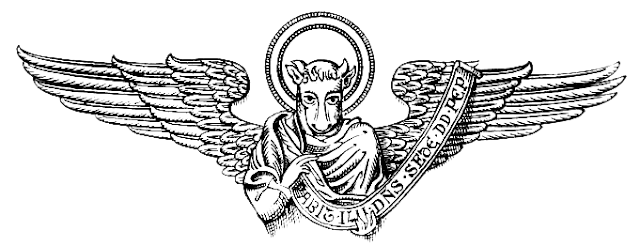Description of Illustration: Black and white illustrations of the four books of the Bible. , transparent backgrounds
Canonical gospels. Of the many gospels written in antiquity, only four gospels came to be accepted as part of the New Testament, or canonical. An insistence upon there being a canon of four gospels, and no others, was a central theme of Irenaeus of Lyons, c. 185. In his central work, Adversus Haereses Irenaeus denounced various early Christian groups that used only one gospel, such as Marcionism which used only Marcion's version of Luke, or the Ebionites, who seem to have used an Aramaic version of Matthew as well as groups that embraced the texts of newer writings, such as the Valentinians (A.H. 1.11).
Irenaeus declared that the four he espoused were the four "Pillars of the Church": "it is not possible that there can be either more or fewer than four" he stated, presenting as logic the analogy of the four corners of the earth and the four winds (3.11.8). His image, taken from Ezekiel 1, or Revelation 4:6–10, of God's throne borne by four creatures with four faces—"the four had the face of a man, and the face of a lion, on the right side: and the four had the face of an ox on the left side; they four also had the face of an eagle"—equivalent to the "four-formed" gospel, is the origin of the conventional symbols of the Evangelists: lion, bull, eagle, man. Irenaeus was ultimately successful in declaring that the four gospels collectively, and exclusively these four, contained the truth. He also supported reading each gospel in light of the others.
By the turn of the 5th century, the Catholic Church in the west, under Pope Innocent I, recognized a biblical canon including the four gospels of Matthew, Mark, Luke, and John, which had been previously established at a number of regional Synods, namely the Council of Rome (382), the Synod of Hippo (393), and two Synods of Carthage (397 and 419). This canon, which corresponds to the modern Catholic canon, was used in the Vulgate, an early 5th-century translation of the Bible made by Jerome under the commission of Pope Damasus I in 382.
Irenaeus declared that the four he espoused were the four "Pillars of the Church": "it is not possible that there can be either more or fewer than four" he stated, presenting as logic the analogy of the four corners of the earth and the four winds (3.11.8). His image, taken from Ezekiel 1, or Revelation 4:6–10, of God's throne borne by four creatures with four faces—"the four had the face of a man, and the face of a lion, on the right side: and the four had the face of an ox on the left side; they four also had the face of an eagle"—equivalent to the "four-formed" gospel, is the origin of the conventional symbols of the Evangelists: lion, bull, eagle, man. Irenaeus was ultimately successful in declaring that the four gospels collectively, and exclusively these four, contained the truth. He also supported reading each gospel in light of the others.
By the turn of the 5th century, the Catholic Church in the west, under Pope Innocent I, recognized a biblical canon including the four gospels of Matthew, Mark, Luke, and John, which had been previously established at a number of regional Synods, namely the Council of Rome (382), the Synod of Hippo (393), and two Synods of Carthage (397 and 419). This canon, which corresponds to the modern Catholic canon, was used in the Vulgate, an early 5th-century translation of the Bible made by Jerome under the commission of Pope Damasus I in 382.
Have a question about the illustration?
Just type it in the comment box and I'll get back to you as soon as
possible. I only publish content that is closely related to the subject
folks.




What is written on the banner of each symbol?
ReplyDeleteI don't know what these say! I've tried to translate them. I think you will need to find a monk or a Latin scholar to tell you this information? If my Dad where still alive, he could read it. I think the book of Mark is actually inverted? Well, good luck! Does anyone write or speak in Latin around here?
ReplyDeleteHello! Yes, the one of Mark is inverted.
ReplyDeleteMark: I cannot get all the abbreviations by IPSE VOS is yourself, IGNE--ablative of ignis, meaning fire. (maybe you yourselves are save by fire)
Luke: He will give him the throne of David his father.
John: And the Word was made flesh.
Oh, thank you so much! I will get this reversed back as soon as I can!
ReplyDelete